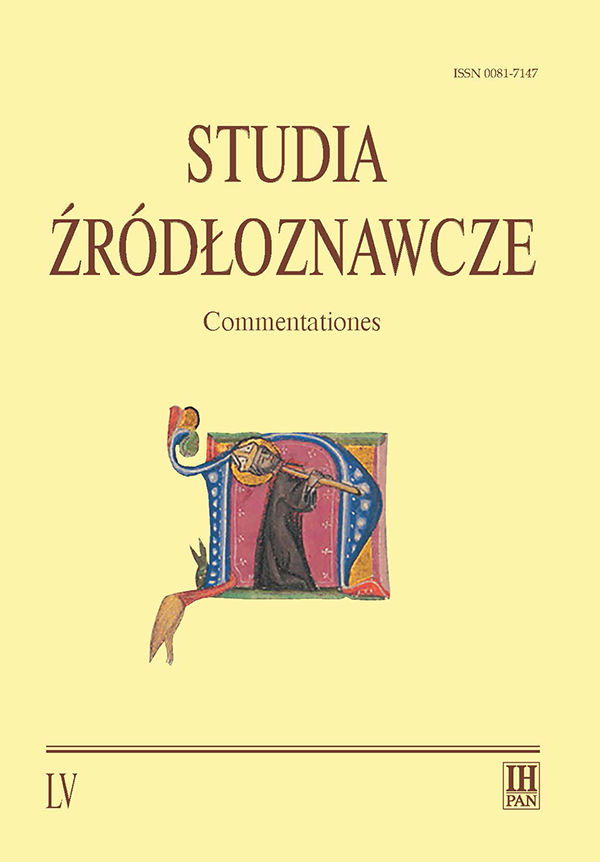Tradycja rękopiśmienna „Rokoszu gliniańskiego” w XVII–XVIII w.
Handwritten tradition of the Gliniany Rebellion, the seventeenth–eighteenth centuries
Author(s): Maciej MatwijówSubject(s): Cultural history, Oral history, Political history, 17th Century, 18th Century
Published by: Instytut Historii im. Tadeusza Manteuffla Polskiej Akademii Nauk
Keywords: Rebellion of Gliniany; political commentary journalism; handwritten circulation; manuscript; the noble Commonwealth;
Summary/Abstract: The Rokosz gliniański (The rebellion of Gliniany) is one of the most popular political texts of the noble Commonwealth of the seventeenth and eighteenth centuries, as is evidenced by the number of 189 copies I have established, including 177 that have still been preserved. The text describes a fictitious rebellion of the nobles that allegedly took place in 1379 near Gliniany, where the nobility was supposed to punish with death several or a dozen or so senators who had acted against the interests of Poland and the Polish nobility. Popularity of this text was caused by its ideological message, justifying the legal basis of the noble “Golden Freedom” and suggesting to the nobility the way to solve conflicts with the king and senators supporting him. Neither the actual circumstances of its composition nor its authorship are known. Since the eighteenth century on, it has been assumed in the literature on the subject that the text was written during the so-called Zebrzydowski’s Rebellion of 1606–1608. An analysis of political writings circulating at that time reveals that the myth of the old rebellion of Gliniany was very popular in the period, but no copy has been found that could be dated to the early seventeenth century without reservations. The oldest preserved copies of the Rokosz gliniański could be dated to the 1630s and 1640s at the earliest. An analysis of the occurrence of this text in various collections of public life material from the seventeenth and eighteenth century (manuscripts of the miscellanea and silva rerum types) made it possible to present trends in its popularisation – the apogee of its popularity was in the time of King August II (1697–1733), and its twilight – in the final years of the Commonwealth (1772–1795). An analysis of its textual variations revealed also a dominant importance of the text circulation in handwritten copies. And although under the Saxon kings (1707–1763) the Rokosz gliniański was printed four times, from among ca. 65 analysed eighteenth-century copies only five were made from the printed version. Despite the handwritten copying, the text of the Rokosz gliniański preserved its integrity for 150 years, with changes introduced only to its style and proper names.
Journal: Studia Źródłoznawcze. Commentationes
- Issue Year: 2017
- Issue No: 55
- Page Range: 173-191
- Page Count: 19
- Language: Polish

